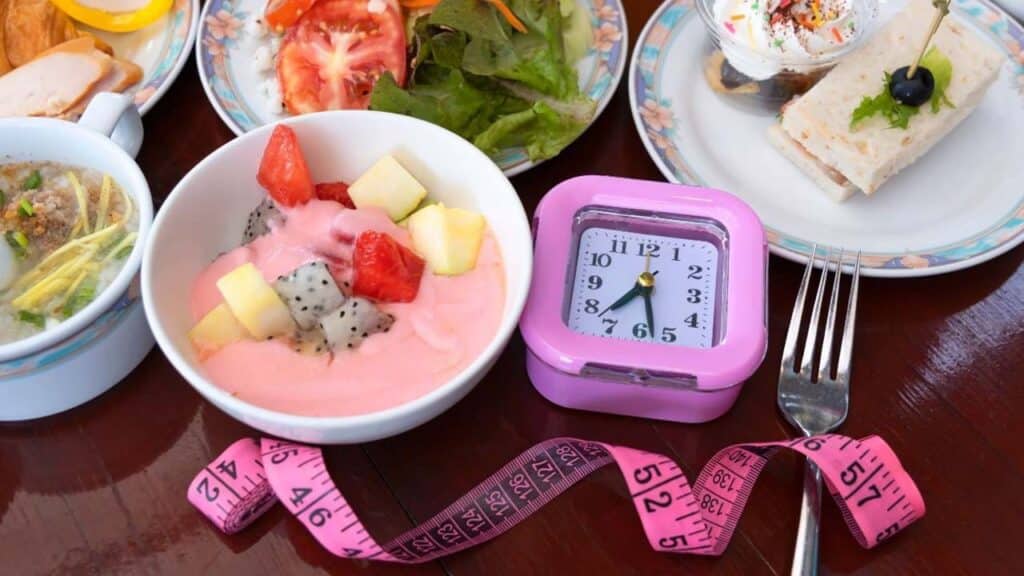Losing weight and getting fit is a common goal for many people. However, it’s not just about shedding pounds quickly. The key to long-term success lies in making sustainable changes that improve your overall health and well-being. This comprehensive guide presents 50 practical and evidence-based sustainable weight loss tips for maximum fitness.
Nutrition, physical activity, lifestyle choices, and mental health are just a few of the variables that affect the complex process of weight loss. By addressing all these aspects, you can create a holistic approach to weight management that not only helps you lose weight but also improves your overall quality of life.
Each suggestion aims to be doable, sustainable, and supported by research. Remember, the journey to a healthier you is personal, and what works best may vary from person to person. The goal is to find strategies that resonate with you and that you can maintain in the long term.
Let’s dive into these 50 tips that can help you achieve and maintain a healthy weight while maximizing your fitness level.
Nutritional Tips
1. Eat More Protein
Protein is a crucial nutrient for weight loss and overall health. It helps you feel full, reduces cravings, and supports muscle growth and maintenance. Aim to include a source of protein in every meal. Good sources include:
- Lean meats (chicken, turkey, lean beef)
- Fish and seafood
- Eggs
- Legumes (beans, lentils, chickpeas)
- Dairy products (Greek yogurt, cottage cheese)
- Plant-based options (tofu, tempeh, and seitan)
2. Fill half your plate with vegetables
Vegetables are nutrient-dense and low in calories, making them perfect for weight loss. They provide essential vitamins, minerals, and fiber that support overall health. Here’s how to incorporate more vegetables into your diet:
- Start meals with a salad or vegetable soup.
- Use vegetables as a base for meals (e.g., zucchini noodles, cauliflower rice).
- Snack on raw vegetables with hummus or Greek yogurt dip.
- Add extra vegetables to sandwiches, wraps, and omelets.
Experiment with different cooking methods (roasting, grilling, and steaming) to find what you enjoy most.
3. Choose whole grains
Whole grains are rich in fiber, which helps you feel full and satisfied. They also provide important nutrients like B vitamins, iron, and magnesium. Replace refined grains with whole grain options:
- Brown rice instead of white rice
- Whole-wheat bread instead of white bread
- Whole-grain pasta instead of regular pasta
- Oatmeal instead of sugary breakfast cereals
- Quinoa, barley, or bulgur in salads and side dishes
Aim to make at least half of your grain intake whole grains.
4. Drink water before meals
Staying hydrated is crucial for overall health and can aid in weight loss. Drinking water before meals can help you feel fuller and potentially reduce calorie intake. Here’s how to implement this tip:
- Drink a glass of water 30 minutes before each meal.
- Carry a reusable water bottle with you throughout the day.
- Set reminders on your phone to drink water regularly.
- Flavor water with fresh fruit or herbs if you find plain water boring.
Aim for at least 8 glasses (64 ounces) of water per day, more if you’re active or in a hot climate.
5. Use smaller plates
This simple trick can help you naturally reduce portion sizes without feeling deprived. Smaller plates make servings appear larger, which can trick your brain into thinking you’re eating more. Try these strategies:
- Use salad plates for main meals.
- Serve snacks in small bowls instead of eating from the package.
- Use tall, narrow glasses for calorie-containing beverages.
- When eating out, ask for a to-go box at the beginning of the meal and put half your food away for later.
6. Eat slowly
It takes about 20 minutes for your brain to register that you’re full. Eating slowly gives your brain time to catch up with your stomach, potentially reducing your overall calorie intake. Here are some tips to slow down your eating:
- Put your fork down between bites.
- Chew each bite thoroughly (aim for 20–30 chews per bite).
- Take sips of water between bites.
- Use chopsticks if you’re not used to them.
Set a timer for 20 minutes and try to make your meal last that long.
7. Plan your meals
Meal planning can help you make healthier choices and avoid impulsive eating. It also saves time and reduces stress around food decisions. Here’s how to start meal planning:
- Set aside time each week to plan meals.
- Make a grocery list based on your meal plan.
- Prep ingredients in advance (e.g., wash and chop vegetables).
- Cook larger batches and use leftovers for lunch or quick dinners.
- Keep a list of easy, healthy meals you enjoy for inspiration.
8. Cook at home
Home-cooked meals are often healthier and lower in calories than restaurant meals. You have more control over ingredients and portion sizes. To make home cooking easier:
- Learn basic cooking techniques through online tutorials or classes.
- Invest in time-saving kitchen tools (e.g., slow cooker, instant pot).
- Keep your pantry stocked with healthy staples.
- Try new recipes regularly to avoid boredom.
Involve family members in meal preparation to make it more enjoyable.
9. Read food labels.
Understanding food labels can help you make informed choices about the foods you eat. Pay attention to:
- Serving sizes
- Calories per serving
- Macronutrients (protein, carbohydrates, and fats)
- Added sugars
- Sodium content
- Ingredient list (choose foods with fewer, recognizable ingredients)
10. Limit processed foods
Processed foods often contain added sugars, unhealthy fats, and excess sodium. They’re typically high in calories but low in nutrients. To reduce processed food intake:
- Shop the perimeter of the grocery store, where fresh foods are usually located.
- Choose whole foods over packaged snacks.
- Make your own versions of your favorite processed foods (e.g., homemade granola, baked chips).
- Read ingredient lists and avoid foods with long lists of unfamiliar ingredients.
11. Include healthy fats
Not all fats are bad for weight loss. Healthy fats can help you feel satisfied and provide important nutrients. Good sources of healthy fats include:
- Avocados
- Nuts and seeds
- Olive oil
- Fatty fish (salmon, sardines, and mackerel)
- Chia seeds and flaxseeds
Aim to include a small amount of healthy fat in each meal.
12. Practice portion control
- Even healthy foods can contribute to weight gain if eaten in large quantities. Use these strategies for portion control:
- Use measuring cups or a food scale to understand proper portion sizes.
- Use your hand as a guide (palm for protein, fist for vegetables, cupped hand for grains).
- Pre-portion snacks into small containers.
- Use the plate method: fill half your plate with vegetables, one quarter with protein, and one quarter with whole grains.
13. Eat more fiber
Fiber-rich foods help you feel full, aid digestion, and can help lower cholesterol levels. Aim for at least 25–30 grams of fiber per day. Good sources include:
- Fruits (berries, apples, and pears)
- Vegetables (broccoli, carrots, and Brussels sprouts)
- Whole grains (oats, quinoa, brown rice)
- Legumes (beans, lentils, chickpeas)
- Nuts and seeds
14. Try intermittent fasting
Some people find success with intermittent fasting, where you limit your eating to certain hours of the day. Common methods include:
- 16/8 method: Fast for 16 hours and eat within an 8-hour window.
- 5:2 diet: Eat normally for 5 days and restrict calories (500–600) for 2 non-consecutive days.
Always consult a healthcare professional before starting any fasting regimen, especially if you have any health conditions.
15. Keep a food diary
Writing down what you eat can increase awareness of your eating habits and help identify areas for improvement. You can:
- Use a notebook or smartphone app to track your food intake.
- Record not just what you eat, but when, where, and how you feel.
- Review your diary regularly to spot patterns and areas for improvement.
- Be honest and include everything, even small snacks or tastes.
Exercise and Physical Activity Tips
16. Start with walking
Walking is a simple, low-impact exercise that’s great for beginners. It requires no special equipment and can be done almost anywhere. To incorporate more walking:
- Take a 10-minute walk after each meal.
- Park farther away from entrances.
- Take the stairs instead of the elevator.
- Walk during phone calls or meetings.
- Aim to gradually increase to 10,000 steps per day.
17. Try strength training
Building muscle helps boost your metabolism and improve your overall fitness. Start with bodyweight exercises and gradually add weights. Basic strength exercises include:
- Squats
- Push-ups
- Lunges
- Planks
- Dumbbell rows
Aim for strength training sessions 2-3 times per week, targeting all major muscle groups.
18. Find activities you enjoy
You’re more likely to stick with exercise if you enjoy it. Experiment with different activities to find what you like.
- Dancing
- Swimming
- Cycling
- Team sports
- Martial arts
- Yoga or Pilates
19. Set realistic goals
Start small and gradually increase your exercise time and intensity. This helps prevent burnout and injury. For example:
- Weeks 1–2: 10-minute walks, 3 times per week
- Week 3-4: 15-minute walks, 4 times per week
- Weeks 5–6: 20-minute walks, 5 times per week
- Continue increasing the duration and adding new activities.
20. Use the stairs
Taking the stairs instead of the elevator is an easy way to add more activity to your day. To make it a habit:
- Start by taking the stairs to one or two floors.
- Gradually increase the number of floors you climb.
- Use the stairs for both ascending and descending.
- Take two steps at a time to increase intensity (if safe for you).
21. Stand more
If you have a desk job, prolonged sitting can negatively impact your health. To incorporate more standing:
- Use a standing desk or a desk converter.
- Take regular breaks to stand and stretch.
- Stand during phone calls.
- Have walking meetings instead of sitting in a conference room.
- Set reminders to stand up every hour.
22. Try high-intensity interval training (HIIT)
HIIT workouts can burn a lot of calories in a short time. They involve short bursts of intense activity followed by rest periods. A simple HIIT workout could be:
- 30 seconds of jumping jacks
- 30 seconds of rest
- 30 seconds of high knees
- 30 seconds of rest
- 30 seconds of burpees
- 30 seconds of rest
Repeat this circuit 3–5 times. Always warm up before HIIT and cool down after.
23. Exercise in the morning
Morning workouts can boost your metabolism for the day and help you make healthier choices. To make morning exercise easier:
- Prepare your workout clothes the night before.
- Go to bed earlier to ensure adequate sleep.
- Start with short, manageable workouts.
- Have a small pre-workout snack if needed.
- Find a morning workout buddy for accountability.
24. Join a fitness class
Group classes can provide motivation, accountability, and proper form guidance. Popular fitness classes include:
- Zumba
- Spin classes
- Body Pump
- Kickboxing
- Yoga
- Boot camp
Try different classes to find ones you enjoy.
25. Use a fitness tracker
Tracking your steps and activity can motivate you to move more. Most fitness trackers can:
- Count steps
- Monitor heart rate
- Track sleep patterns.
- Provide reminders to move.
- Allow you to set and track fitness goals.
26. Incorporate exercise into your daily life
Find ways to be more active throughout your day:
- Do squats while brushing your teeth.
- Stretch while watching TV.
- Do calf raises while waiting in line.
- Take a walk during your lunch break.
- Use a treadmill or stationary bike while reading or watching shows.
27. Try yoga
Yoga can improve flexibility, reduce stress, and help with weight loss. Different types of yoga include:
- Hatha yoga (gentle, good for beginners)
- Vinyasa yoga (more active, flowing movements)
- Power yoga (more intense, strength-building)
- Yin yoga (slow-paced, focuses on holding poses)
Start with beginner classes and gradually progress as you build strength and flexibility.
28. Don’t skip the warm-up and cool-down
Proper warm-ups and cool-downs help prevent injury and improve recovery. A good warm-up should include:
- Gradually increase heart rate
- Loosening muscles and joints
- Include dynamic stretches.
A proper cool-down should:
- Gradually lower heart rate
- Include static stretches.
- Help prevent muscle soreness.
29. Mix up your routine
Varying your workouts challenges your body in different ways and prevents boredom. Try:
- Alternating between cardio and strength training days
- Trying a new fitness class each month
- Exercising in different environments (gym, outdoors, home)
- Using different equipment (resistance bands, kettlebells, medicine balls)
30. Be active with friends and family
Make physical activity a social event. Ideas include:
- Family bike rides
- Playing sports together
- Taking dance classes with friends
- Joining a recreational sports league
- Going on group hikes or nature walks
Lifestyle and habit changes
31. Get enough sleep
Lack of sleep can disrupt the hormones that control hunger and appetite. Aim for 7-9 hours of sleep per night. To improve sleep quality:
- Stick to a consistent sleep schedule, even on weekends.
- Create a relaxing bedtime routine.
- Make your bedroom dark, quiet, and cool.
- Avoid screens for at least an hour before bed.
- Limit caffeine and alcohol, especially in the evening.
32. Manage stress
Chronic stress can lead to overeating and weight gain. Try stress-reduction techniques such as:
- Deep breathing exercises
- Meditation or mindfulness practices
- Progressive muscle relaxation
- Regular exercise
- Spending time in nature
- Engaging in hobbies or creative activities
33. Limit alcohol
Alcoholic drinks are high in calories and can lead to overeating. If you choose to drink, do so in moderation.
- Stick to one drink per day for women and two for men.
- Choose lower-calorie options (light beer, wine spritzer).
- Alternate alcoholic drinks with water.
- Avoid high-calorie mixers like soda or juice.
- Don’t drink on an empty stomach.
34. Keep healthy snacks handy
Having healthy snacks readily available can prevent you from reaching for unhealthy options when hungry. Good options include:
- Cut vegetables with hummus.
- Apple slices with almond butter
- Greek yogurt with berries
- Hard-boiled eggs
- Unsalted nuts or seeds
- Air-popped popcorn
35. Avoid eating while distracted
Eating while watching TV or working can lead to overeating. Practice mindful eating instead.
- Eat at a table, not in front of the TV or computer.
- Focus on your food, noticing the taste, texture, and smell.
- Chew slowly and put your utensils down between bites.
- Avoid multitasking during meals.
Use all your senses to fully appreciate your food.
36. Use smaller dishes and utensils
This can help you naturally eat less without feeling deprived.
- Use salad plates instead of dinner plates for meals.
- Choose smaller bowls for soups and cereals.
- Use smaller utensils to take smaller bites.
- Serve snacks in small bowls instead of eating from the package.
- When dining out, ask for an appetizer plate to control portions.
37. Brush your teeth after meals
This can signal to your brain that eating time is over and reduce snacking.
- Keep a travel toothbrush and toothpaste at work.
- Brush your teeth soon after finishing a meal.
- Use sugar-free mint gum if brushing isn’t possible.
- Floss after meals for added oral health benefits.
- Consider using a tongue scraper for fresher breath.
38. Avoid keeping junk food at home.
If it’s not in your house, you’re less likely to eat it.
- Clean out your pantry and fridge of unhealthy foods.
- Make a shopping list and stick to it when grocery shopping.
- Avoid the snack and candy aisles at the store.
- If you buy treats, choose single-serving packages.
- Keep fruits and vegetables visible and easily accessible.
39. Get support
Tell friends and family about your goals. Their support can help you stay motivated.
- Join a weight loss support group (in-person or online).
- Find a workout buddy for accountability.
- Share your goals with close friends or family members.
- Consider working with a registered dietitian or personal trainer.
- Use social media to connect with others on similar journeys.
40. Make gradual changes
Trying to change everything at once can be overwhelming. Start with small changes and build from there.
- Week 1: Focus on drinking more water.
- Week 2: Add a serving of vegetables to each meal.
- Week 3: Start a daily 10-minute walk.
- Week 4: Replace sugary drinks with unsweetened alternatives.
- Continue adding one small change each week.
Mental Health and Mindset Tips
41. Practice self-compassion
Be kind to yourself. Weight loss is a journey with ups and downs.
- Treat yourself as you would a good friend.
- Acknowledge that setbacks are normal and part of the process.
- Use positive self-talk and avoid negative self-criticism.
- Celebrate small victories and progress, not just end goals.
- Keep in mind that your worth is not based on your weight.
42. Focus on health, not just weight
Remember that being healthy is more important than a number on the scale.
- Set non-weight-related goals (e.g., improved energy, better sleep).
- Track other health markers (blood pressure, cholesterol levels).
- Notice improvements in how your clothes fit rather than just your weight.
- Focus on how you feel after eating nutritious foods or exercising.
- Appreciate your body for what it can do, not just how it looks.
43. Celebrate non-scale victories
Notice improvements in energy, mood, and how your clothes fit, not just weight loss:
- Keep a journal of positive changes you notice.
- Take progress photos to see changes that the scale doesn’t show.
- Note improvements in fitness (e.g., being able to climb stairs without getting winded).
- Celebrate better sleep quality or improved digestion.
- Acknowledge positive changes in your relationship with food.
44. Visualize success
Spend time imagining yourself at your goal weight and how it will feel.
- Create a vision board with images representing your health goals.
- Write a detailed description of your ideal, healthy lifestyle.
- Practice guided visualization exercises focusing on health and fitness.
- Imagine how you’ll feel when you reach your goals.
- Visualize yourself overcoming obstacles on your journey.
45. Address emotional eating
Learn to recognize when you’re eating due to emotions rather than hunger. Find other ways to cope with emotions.
- Keep a food and mood journal to identify emotional eating triggers.
- Practice the HALT method (ask if you’re hungry, angry, lonely, or tired).
- Develop a list of alternative activities for emotional comfort (e.g., calling a friend, taking a bath).
- Learn and practice stress-management techniques.
- Consider working with a therapist to address underlying emotional issues.
46. Use positive affirmations
Positive self-talk can boost your confidence and motivation.
- Start your day with positive affirmations about your health and body.
- Create a list of affirmations specific to your weight-loss journey.
- Place affirmation reminders around your home or workspace.
- Practice saying affirmations out loud in front of a mirror.
- Use affirmations to counter negative thoughts when they arise.
47. Practice mindfulness
Being more aware of your thoughts and feelings can help you make better choices.
- Try mindful eating practices (eat slowly, savor each bite).
- Practice daily meditation, even if just for a few minutes.
- Use mindfulness apps for guided exercises.
- Pay attention to your body’s hunger and fullness cues.
- Be present during physical activities, focusing on how your body feels.
48. Set non-food rewards
Reward yourself for reaching milestones with things that don’t involve food:
- Treat yourself to a massage or spa day.
- Buy new workout clothes or gear.
- Plan a fun outing or activity you enjoy.
- Invest in a new hobby or class you’ve wanted to try.
- Save money towards a bigger reward (e.g., a vacation).
49. Learn from setbacks
Instead of getting discouraged by slip-ups, use them as learning opportunities.
- Analyze what led to the setback without judgment.
- Identify triggers or situations that challenge your goals.
- Develop strategies to handle similar situations in the future.
- Remember that one setback doesn’t undo all your progress.
- Get back on track with your next meal or workout.
50. Seek professional help if needed
If you’re struggling with your weight or mental health, don’t hesitate to seek help from a doctor, nutritionist, or therapist.
- Consult with a registered dietitian for personalized nutrition advice.
- Work with a certified personal trainer to develop a safe exercise plan.
- Consider therapy or counseling for emotional eating or body image issues.
- Get regular check-ups with your doctor to monitor your overall health.
- Join a structured weight-loss program for additional support and guidance.
Conclusion
Achieving and maintaining a healthy weight is a journey that involves much more than just counting calories or following a strict diet. The 50 tips outlined in this guide provide a comprehensive approach to sustainable weight loss and maximum fitness. They address various aspects of health, including nutrition, physical activity, lifestyle habits, and mental well-being.
Remember, you don’t need to implement all these tips at once. Start with a few that resonate with you and gradually incorporate more over time. The key to success is finding an approach that works for you and that you can maintain long-term. Be patient with yourself and focus on making small, consistent changes rather than drastic ones.
It’s important to celebrate your progress, no matter how small, and to be kind to yourself throughout the process. Weight loss is not always linear, and setbacks are a normal part of any lifestyle change. Use these challenges as learning opportunities and stay focused on your overall health and well-being.
Remember that sustainable weight loss isn’t just about looking good—it’s about feeling good and improving your overall quality of life. By following these tips, you’re not just losing weight; you’re creating a healthier, happier you. You’re building habits that will serve you well for years to come, improving not just your physical health but also your mental and emotional well-being.
Start your journey today. Every step, no matter how small, is a step towards a healthier you. Be consistent, stay positive, and trust the process. With time and patience, you’ll see the results of your efforts. You’ve got this!
Lastly, while these tips are generally safe for most people, it’s always a good idea to consult with a healthcare professional before making significant changes to your diet or exercise routine, especially if you have any pre-existing health conditions. They can provide personalized advice and ensure that your weight-loss journey is safe and effective for your individual needs.
Remember, the goal is not perfection, but progress. Embrace the journey, learn from your experiences, and keep moving forward. Your future, healthier self, is worth all the effort you’re putting in today!












































